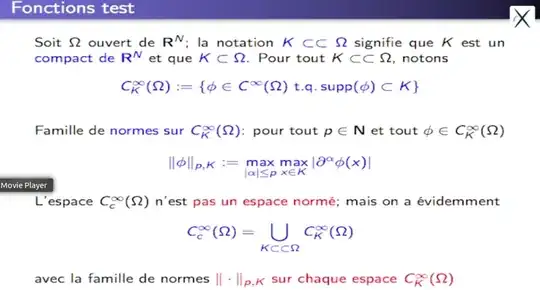I am watching a Coursera video on Théorie des Distributions and I am trying to understand one of the slides.

Let $\Omega \subset \mathbb{R}^N$ be an open set and $C_K^\infty(\Omega) = \{ \phi \in C^\infty(\Omega) : \mathrm{supp}(\phi)\subset K \}$.
This space has has an infinite family of norms for each $p \in \mathbb{N}$, and compact $K \subset \Omega$ - the maximum of the partial derivative:
$$ ||\phi||_{p,K} = \max_{|\alpha|\leq p} \max_{x \in K} |\partial^\alpha \phi(x)|$$
Why is $C_c^\infty(\Omega)$ not a normed space, if we can compute a norm of a function in any compact subset?
Here "compact" means closed and bounded since we are dealing with $\mathbb{R}^n$.